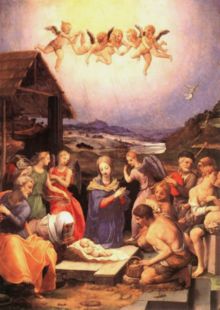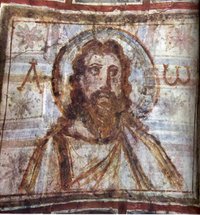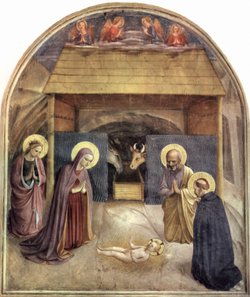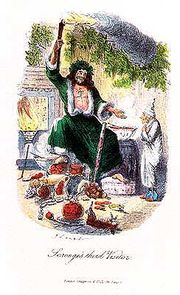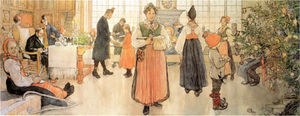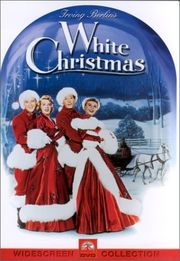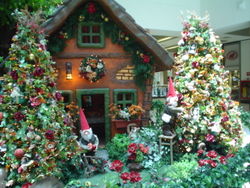Christmas
History of Christmas
Origin of holiday of Christmas
Although no one knows on which date Jesus was born, Christians have favored December 25 since ancient times. It is the date on which the Romans marked the winter solstice and it is nine months following the Festival of Annunciation (March 25). In ancient and early Medieval times, Christmas was either a minor feast, or not celebrated at all.
Around 220, the theologian Tertullian declared that Jesus died on March 25, AD 29, but was resurrected 3 days later. Although this is not a plausible date for the crucifixion, it does suggest that March 25 had significance for the church even before it was used as a basis to calculate Christmas. Modern scholars favor a crucifixion date of April 3, AD 33 (also the date of a partial lunar eclipse).[2] (These are Julian calendar dates. Subtract two days for a Gregorian date.)
By 240, a list of significant events was being assigned to March 25, partly because it was believed to be the date of the vernal equinox. These events include creation, the fall of Adam, and, most relevantly, the Incarnation.[3] The view that the Incarnation occurred on the same date as crucifixion is consistent with a Jewish belief that prophets died at an "integral age," either an anniversary of their birth or of their conception.[4][5]
Aside from being nine months later than Annunciation, December 25 is also the date the Romans marked the winter solstice, which they referred to as bruma. For this reason, some have suggested the opposite of the theory outlined above, i.e. that the date of Christmas was chosen to be the same as that of the solstice and that the date of Annunciation was calculated on this basis. (The Julian calendar was originally only one day off, with the solstice falling on December 24 in 45 BC. Due to calendar slippage, the date of the astronomical solstice has moved back so that it now falls on either December 21 or December 22).
The idea that December 25 is Jesus' birthday was popularized by Sextus Julius Africanus in Chronographiai (AD 221), an early reference book for Christians. This identification did not at first inspire feasting or celebration. In 245, the theologian Origen denounced the idea of celebrating the birthday of Jesus "as if he were a king pharaoh." Only sinners, not saints, celebrate their birthdays, Origen contended.
In 274, Emperor Aurelian designated December 25 as the festival of Sol Invictus (the "unconquered sun"). Aurelian may have chosen this date because the solstice was considered the birthday of Mithras, a syncretic god of Persian origin. Mithras is often identified with Sol Invictus, although Sol was originally a separate Syrian god.
Mithras was a god of light and a child of the earth who sprang up next to a sacred stream. He was born bearing a torch and armed with a knife. Sundays were dedicated to Mithras and caves were often used for his worship. A series of emperors promoted Mithraism beginning with Commodus. The cult emphasized loyalty to the emperor and Roman soldiers were expected to participate. Mithraism collapsed rapidly after Constantine I withdrew imperial favor (312), despite being at the peak of its popularity only a few years earlier.
As Constantine ended persecution, Christians began to debate the nature of Christ. The Alexandrian school argued that he was the divine word made flesh (see John 1:14), while the Antioch school held that he was born human and infused with the Holy Spirit at the time of his baptism (see Mark 1:9-11). A feast celebrating Christ's birth gave the church an opportunity to promote the intermediate view that Christ was divine from the time of his incarnation.[6] Mary, a minor figure for early Christians, gained prominence as the theotokos, or god-bearer. There were Christmas celebrations in Rome as early as 336. December 25 was added to the calendar as a feast day in 350.[6]
Medieval Christmas and related winter festivals
Christmas soon outgrew the Christological controversy that created it and came to dominate the medieval calendar. The forty days before Christmas became the "forty days of St. Martin," now Advent. The fortieth day after Christmas was Candlemas. The Egyptian Christmas celebration on January 6 was adopted as Epiphany, one of the most prominent holidays of the year during Early Middle Ages. Christmas Day itself was a relatively minor holiday, although its prominence gradually increased after Charlemagne was crowned on Christmas Day, 800.
Although the nativity narrative is among the most compelling stories in the Bible, other Christian holidays such as Easter are more significant from a strictly religious point of view. The popularity of Christmas can be better understood if it is viewed as a form of winter celebration. Agricultural societies typically hold their most important festival in winter since there is less need of farm work at this time.
The Romans had a winter celebration known as Saturnalia. This festival was originally held on December 17 and honored Saturn, a god of agriculture. It recalled the "golden age" when Saturn ruled. In imperial times, Saturnalia was extended to seven days (December 17-23). Combined with festivals both before and after, the result was an extended winter holiday season. Business was postponed and even slaves feasted. There was drinking, gambling and singing naked. It was the "best of days," according to the poet Catullus.[7] With the coming of Christianity, Italy's Saturnalian traditions were attached to Advent (the forty days before Christmas). Around the 12th century, these traditions transferred again to the "twelve days of Christmas" (i.e. Christmas to Epiphany).[6]
Northern Europe was the last part to Christianize, and its pagan celebrations had a major influence on Christmas. Scandinavians still call Christmas Jul (Yule), originally the name of a twelve-day pre-Christian winter festival. Logs were lit to honor Thor, the god of thunder, hence the "Yule log." In Germany, the equivalent holiday is called Mitwinternacht (mid-winter night). There are also twelve Rauhn?chte (harsh or wild nights).[8]
By the High Middle Ages, Christmas had become so prominent that chroniclers routinely note where various magnates "celebrated Christmas." King Richard II of England hosted a Christmas feast in 1377 at which twenty-eight oxen and three hundred sheep were eaten. The "Yule boar" was a common feature of medieval Christmas feasts. Aside from feasting, there was also caroling. This was originally a group of dancers who sang. There was a lead singer and a ring of dancers that provided the chorus. Various writers of the time condemn caroling as lewd, the dancing may have got out of hand now and then (harking back to the traditions of Saturnalia and Yule).[6] "Misrule" ? drunkenness, promiscuity, gambling ? was an important aspect of the festival. In England, gifts were exchanged on New Year's Day, and there was special Christmas ale.[6]
The Reformation and modern times
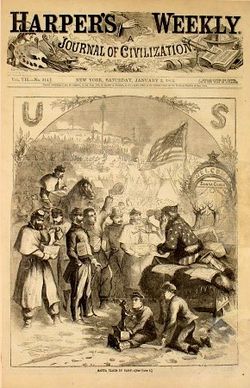
During the Reformation, Protestants condemned Christmas celebration as "trappings of popery" and the "rags of the Beast". The Catholic Church responded by promoting the festival in a more religiously oriented form. When a Puritan parliament triumphed over the King Charles I of England (1644), Christmas was officially banned (1647). Pro-Christmas rioting broke out in several cities. For several weeks, Canterbury was controlled by the rioters, who decorated doorways with holly and shouted royalist slogans.[10] The phrase "[11] Queen Victoria and her German-born husband Prince Albert enthusiastically promoted Christmas trees, as well as the idea of placing gifts under them. The royal family's tree of 1848 was widely publicized and imitated. Christmas cards were first designed in 1843 and became popular in the 1860s.[11] The commercial calendar, created to answer children's questions concerning when Christmas would come, dates from 1851.
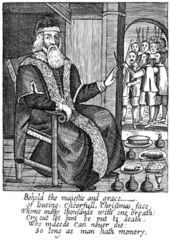
The Puritans of New England disapproved of Christmas and celebration was outlawed in Boston (1659-81). Virginia and New York, meanwhile, celebrated freely. Christmas fell out of favor after the American Revolution, when it was considered an "English custom". Interest was revived by several short stories by Washington Irving in The Sketch Book of Geoffrey Crayon (1819) and by "Old Christmas" (1850) which depict harmonous warm-hearted holiday traditions Irving claimed to have observed in England. Although some argue that Irving invented the traditions he describes, they were imitated by his American readers.[2] German immigrants and the homecomings of the Civil War helped promote the holiday. Christmas was declared a federal holiday in 1870.
Santa Claus is derived from Saint Nicholas, or Sinterklaas, who gave candy to the Dutch children on December 6. Dutch settlers in New York brought this tradition with them. Irving writes of Saint Nicholas "riding over the tops of the trees, in that selfsame waggon wherein he brings his yearly presents to children."[12] The connection between Santa Claus and Christmas was popularized by the poem "A Visit from Saint Nicholas" (1822) by Clement Clarke Moore, which depicts Santa driving a sleigh pulled by reindeer and distributing gifts to children. His image was created by German-American cartoonist Thomas Nast (1840-1902), who drew a new image annually beginning in 1863. By the 1880s, Nast's Santa had evolved into the form we now recognize. The image was standardized by advertisers in the 1920s.[13] Father Christmas is first recorded in the 15th century,[11] but was associated with holiday merrymaking and drunkenness until Victorian Britain remade his image to match that of Santa.
In the midst of World War I, there was a Christmas truce between German and British troops in France (1914). Soldiers on both sides spontaneously began to sing Christmas carols and stopped fighting. The truce began on Christmas Day and continued for some time afterward. There was even a soccer game between the trench lines in which Germany's 133rd Royal Saxon Regiment is said to have bested Britain's Seaforth Highlanders 3-2.
Some muslims celebrate Christmas because the religion of Islam regards Jesus as a prophet, messenger and one of the top five human servants of God (Allah).
The Nativity
The nativity narratives in the Gospel of Luke and the Gospel of Matthew focus on quite different aspects of the event. The Gospel of Mark, considered the earliest and most historical gospel according to the doctrine of Markan priority, does not include a nativity narrative.
In Luke, Mary learns from an angel that the Holy Spirit has caused her to be with child. Mary points out that she is a virgin and the angel responds that "with God nothing shall be impossible." Shortly thereafter, she and her husband Joseph leave their home in Nazareth to travel about 150 kilometres (90 miles) to Joseph's ancestral home, Bethlehem, in order to register for a census ordered by Emperor Augustus. Finding no room at the inns, they lodge in a stable. There Mary gives birth to Jesus. An angel of the lord goes to the fields and tells the shepherds the "tidings of joy." A heavenly host proclaims, "Glory to God in the highest, and on earth peace to men on whom his favour rests." The shepherds come to the manger to adore the infant Jesus (Luke 1:5-2:20).
In Matthew, magi arrive at the court of King Herod in Jerusalem and ask, "Where is the child who has been born king of the Jews? We have observed the rising of his star, and we have come to pay him homage." (Compare to Numbers 24:17.) The word magi is traditionally translated as "wise men." The word connects them to the magi of Babylon who select Daniel their chief in the Book of Daniel. Daniel's magi interpret dreams and other portents. The book was well-known in ancient times for its prophecy concerning the messiah[14](Daniel 9:24-27), a man who will be sent by God to lead the Jewish people.
Neither the names of the magi nor their number are specified in the Bible, but tradition tells us there were three: Balthassar, Melchior, and Caspar. Balthassar is a Greek version of the Babylonian name Belshazzar. This is the name of a king in Daniel. Melchior means "The king is my light" in Aramaic. Caspar is a Latinized version of Gondophares, a Parthian (i.e. Persian) name. The magi are sometimes called kings because of prophecies that kings will do homage to the messiah (Isaiah 60:3, Psalms 72:11).
Herod is disturbed by the magi's words and questions them closely, attempting to determine when the star first appeared and when the child was born. The king asks his advisors where the messiah will be born. They answer Bethlehem, birthplace of King David, and quote Micah 5:2-4. "When you have found him, bring me word so that I may also go and pay him homage," a deceitful Herod tells the magi.
As they travel to Bethlehem, the magi follow the star of Bethlehem, which leads them to a house where they find Jesus. Jesus is no longer in the manger described by Luke. He is a child (paidion), not an infant (brephos). The magi present Jesus with gold, frankincense, and myrrh. (If these gifts were chosen in view of Isaiah 60:1-7, it may explain the magi's earlier trip to Jerusalem.)[15] In a dream, the magi received a divine warning of Herod's intent to kill the child, who he sees as a rival. Consequently, they return to their own country without telling Herod the result of their mission. An angel tells Joseph to flee with his family to Egypt. Meanwhile, Herod orders that all male children of Bethlehem under the age of 2 be killed. After Herod's death, the family settles in Nazareth (Matthew 2:1-23).
Other dates of celebration for Christmas
Although Christmas may be celebrated on December 25 -31 in historically Catholic and Protestant nations, in eastern Europe it is often celebrated on January 7. This is because the Orthodox church continues to use the Julian calendar for determining feast days.[16]
The Orthodox churches fast during the forty days before Christmas. Christmas is dubbed the "Feast of the Nativity of our Lord, God, and Saviour Jesus Christ." Armenian Christians celebrate Christmas on January 6.[17]
Dates for the secular aspects of the Christmas celebration also vary. In the United Kingdom, the Christmas season traditionally runs for twelve days beginning on Christmas Day. These twelve days of Christmas, a period of feasting and merrymaking, end on Twelfth Night, the eve of the Feast of the Epiphany. In medieval times, Swedish law provided for a Christmas peace (julefrid) of twenty days during which fines for robbery and manslaughter were doubled. On Knut's Day, the twentieth day after Christmas (January 13), Swedish children celebrate and throw out the family Christmas tree (julgransplundring).
The Christmas festive period has grown longer in some countries. In the U.S., the pre-Christmas shopping season begins on the day after Thanksgiving. In the Philippines, radio stations usually start playing Christmas music during what is called the "-ber months" (September, October, etc.).
Countries that celebrate Christmas on December 25 recognize the previous day as Christmas Eve and have various names for the day after Christmas. In the Netherlands, Germany, Scandinavia, Lithuania and Poland, Christmas Day and the following day are called First and Second Christmas Day. In many European and Commonwealth countries, the first non-Sunday after Christmas is referred to as Boxing Day. In Finland, Ireland, Italy, Romania, Austria, and Catalonia (Spain), the day is known as St. Stephen's Day Lendemain de No?l ("the day after Christmas")..
http://christmastime.50webs.com/Regional customs and celebrations
Many Christmas practices originate in Germanic countries, including the Christmas tree, the Christmas ham, the Yule log, holly, mistletoe, and the giving of presents. The prominence of Christmas in Germanic nations may be a form of carryover from the pagan midwinter holiday of Yule.
Russia banned Christmas celebration from 1917 until 1992. Several Christian denominations, notably the Jehovah's Witnesses, Puritans, and some fundamentalists, view Christmas as a pagan holiday not sanctioned by the Bible.
In the southern hemisphere, Christmas is during the summer. This clashes with the traditional winter iconography, resulting in oddities such as a red fur-coated Santa Claus surfing in for a turkey barbecue on Australia's Bondi Beach. Japan has adopted Santa Claus for its secular Christmas celebration, but New Year's Day is a far more important holiday. In India, Christmas is often called bada din ("the big day"), and celebration revolves around Santa Claus and shopping. In South Korea, Christmas is celebrated as an official holiday.
Santa Claus and other bringers of gifts at Christmas
Gift-giving is a near-universal part of Christmas celebrations. The concept of a mythical figure who brings gifts to children derives from Saint Nicholas, a bishop of Myra in fourth century Lycia, Asia Minor. He made a pilgrimage to Egypt and Palestine in his youth and soon thereafter became Bishop of Myra. He was imprisoned during the persecution of Diocletian and released after the accession of Constantine. He may have been present at the Council of Nicaea, though there is no record of his attendance. He died on December 6 in 345 or 352. In 1087, Italian merchants stole his body at Myra and brought it to Bari in Italy. His relics are preserved in the church of San Nicola in Bari. An oily substance known as Manna di S. Nicola, which is highly valued for its medicinal powers, is said to flow from his relics.[18]
The Dutch recognized a
Saint Nicholas
The French equivalent of Santa,
P?re No?l, evolved along similar lines, eventually adopting the Santa image.
In some cultures Santa Claus is accompanied by Knecht Ruprecht, or Black Peter.
In other versions,
elves
make the holiday toys. His wife is referred to as
Mrs. Clauss. Many shopping malls in North America, the United Kingdom, and
Australia have a Santa Claus children can visit to ask for presents. The current tradition in several Latin American countries (such as Venezuela)
holds that while Santa makes the toys, he then gives them to the Baby Jesus, who
is the one who actually delivers them to the children's homes. This story is
meant to be a reconciliation between traditional religious beliefs and modern
day globalization, most notably the iconography of Santa Claus imported from the
United States.. In many countries, children leave empty containers for Santa to fill with
small gifts such as toys, candy, or fruit. In the United Kingdom, the United
States, and Canada children hang a
Christmas stocking
In the Netherlands,
Saint Nicholas
Christmas Eve (December 24) for the children to find and open the following
morning has been widely adopted as well. In Poland, Santa Claus (Polish: Święty
Mikołaj) gives gifts on two occasions: on the night of December 5 (so that
children find them on the morning of December 6) and on
Christmas Eve, (so that children find gifts that same day). In Finland,
Joulupukki personally meets children and gives gifts on December 24. In
Russia,
Grandfather Frost brings presents on New Year's Eve, and these are opened on
the same night. In Scotland, presents were traditionally given on
Hogmanay, which is New Year's Eve, but many Scots - especially since the
establishment of Christmas Day as a legal holiday in 1967 - have adopted the
English tradition of exchanging gifts on Christmas morning. The song ";Twelve
Days of Christmas", celebrates an old English tradition of gifts each day
from Christmas to Epiphany. In most of the world, Christmas gifts are given at
night on Christmas Eve or in the morning of Christmas Day. Until recently, the
British gave gifts to non-family members on
Boxing Day. Seriously.Timing of gifts for Christmas
Declaration of Christmas Peace
Christmas Decorations
In the Western world, rolls of paper with secular or religious Christmas motifs are manufactured for the purpose of wrapping gifts. Common motifs include Christmas treess, holly, poinsettias, mistletoe, swags, wreaths, Santa Claus, the Nativity, angels, carolers, nutcrackers, toy soldiers, sleighs, sleds, drums, drummer boys, bows, reindeer, Christmas tree ornaments, gingerbread people and gingerbread houses, candies, stars, snowflakes, snowmen, snow babies, and penguins.
Christmas trees may be decorated with lights and ornaments. The interior of a home may be decorated with garlands and evergreen foliage, particularly holly and mistletoe. In Australia, North and South America and to a lesser extent Europe, it is traditional to decorate the outside of houses with lights and sometimes with illuminated sleighs, snowmen, and other Christmas figures.
Since the 19th century, the poinsettia has been associated with Christmas. Other popular holiday plants include holly, mistletoe, red amaryllis, and Christmas cactus.
Municipalities often sponsor decorations as well. Christmas banners may be hung from street lights and Christmas trees placed in the town square. In the U.S., decorations once commonly included religious themes. This practice has led to many lawsuits, as some say it amounts to the government endorsing a religion. In 1984, the US Supreme Court ruled that a city-owned Christmas display, even one with a Nativity scene, does not violate the First Amendment.[19]
Social aspects and entertainment around Christmas
In many countries, businesses, schools, and communities have Christmas parties and dances in the weeks before Christmas. Christmas pageants may include a retelling of the story of the birth of Christ. Groups may visit neighborhood homes to sing Christmas carols. Others do volunteer work or hold fundraising drives for charities.
On Christmas Day or Christmas Eve, a special meal of Christmas dishes is usually served. In some regions, particularly in Eastern Europe, these family feasts are preceded by a period of fasting. Candy and treats are also part of Christmas celebration in many countries.
Many people also send Christmas cards to their friends and family members. Many cards are also produced with messages such as "season's greetings" or "happy holidays", so as to including senders and recipients who may not celebrate Christmas .
Because of the focus on celebration, friends, and family, people who lead more isolated lives, or who have recently suffered losses, are more likely to suffer from depression during Christmas. This increases the demand for counseling services. It is widely believed that suicides and murders spike during the holiday season. However, the peak months for suicide are May and June. Because of holiday celebrations, alcohol and drunk driving-related fatalities increase.
Christmas carol media
-
Deck the Halls (file info) ?
play in browser (beta)
- Deck the Halls
-
Oh Holy Night (file info) ?
play in browser (beta)
- Oh Holy Night
-
Angels We Have Heard On High (file info) ?
play in browser (beta)
- Angels We Have Heard On High, performed by Clarinet and French Horn
Christmas in the arts and media
Many fictional Christmas stories capture the spirit of Christmas in a modern-day fairy tale, often with heart-touching stories of a Christmas miracle. Several have become part of the Christmas tradition in their countries of origin.
Among the most popular are Tchaikovsky's ballet The Nutcracker and Charles Dickens's novel A Christmas Carol. The Nutcracker tells of a nutcracker that comes to life in a young German girl's dream. Charles Dickens' A Christmas Carol is the tale of curmudgeonly miser Ebenezer Scrooge. Scrooge rejects compassion, philanthropy, and Christmas until he is visited by the ghosts of Christmas Past, Present and Future, who show him the consequences of his ways.
Some Scandinavian Christmas stories are less cheery than Dickens's. In H. C. Andersen's The Little Match Girl, a destitute little slum girl walks barefoot through snow-covered streets on Christmas Eve, trying in vain to sell her matches, and peeking in at the celebrations in the homes of the more fortunate. She dares not go home because her father is drunk. Unlike the principals of Anglophone Christmas lore, she meets a tragic end.
Many Christmas stories have been popularized as movies and TV specials. Since the 1980s, many video editions are sold and resold every year during the holiday season. A notable example is the film It's a Wonderful Life, which turns the theme of A Christmas Carol on its head. Its hero, George Bailey, is a businessman who sacrificed his dreams to help his community. On Christmas Eve, a guardian angel finds him in despair and prevents him from committing suicide by magically showing him how much he meant to the world around him. Perhaps the most famous animated production is A Charlie Brown Christmas wherein Charlie Brown tries to address his feelings of dissatisfaction with the holidays by trying to find a deeper meaning in them. The humorous A Christmas Story (1983) has become a holiday classic.
Radio and television programs aggressively pursue entertainment and ratings
through their cultivation of Christmas themes. Radio stations broadcast
Christmas carols and
Christmas songs
Christmas is typically the largest annual stimulus for many nations. Sales
increase dramatically in almost all retail areas and shops introduce new
products as people purchase gifts, decorations, and supplies. In the U.S., the
Christmas shopping season now begins on Black Friday, the day after
Thanksgiving. The economic impact of Christmas continues after the holiday.
During Christmas sales and New Year's sales, stores sell off excess inventories. More businesses and stores close on Christmas Day than any other day of the
year. In the United Kingdom, the
Christmas Day (Trading) Act 2004 prevents all large shops from trading on
Christmas Day. Many Christians, as well as anti-consumerists, decry the commercialization of
Christmas. They accuse the Christmas season of being dominated by money and
greed at the expense of the holiday's more important values. Frustrations over
these issues and others can lead to a rise in Christmastime social problems.
Detractors of this school of thought argue that the idea of a grand winter
holiday existed in our society long before Christianity. Most economists agree, however, that Christmas produces a deadweight loss
under orthodox microeconomic theory, due to the surge in gift-giving. This loss
is calculated as the difference between what the gift giver spent on the item
and what the gift receiver would have paid for the item. It is estimated that in
2001 Christmas resulted in a $4 billion deadweight loss in the U.S. alone.[20][21]
Because of complicating factors, this analysis is sometimes used to discuss
possible flaws in current microeconomic theory. In North America, film studios release many high-budget movies in the holiday
season, including Christmas films, fantasy movies or high-tone dramas with rich
production values. This helps the studio capture holiday crowds and position
themselves for the Academy Awards. Christmas is the most lucrative season for
the industry aside from summer. Christmas-specific movies generally open in late
November or early December as their themes and images are not nearly as popular
once the season is over. Home video release is often delayed until the following
Christmas season.EEconomics of Christmas
See also
References
